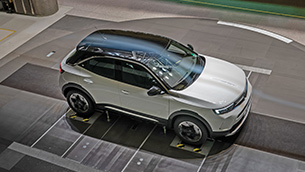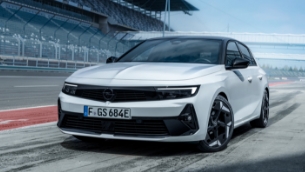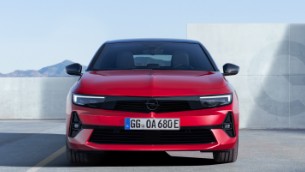Opel Cars Can See: Opel Eye camera reads signs, improves safety
Opel introduces a first: A camera that aids drivers in two different ways. The Traffic Sign Recognition function reads speed limit and no-passing signs and displays them on the instrument panel. The Lane Departure Warning alerts drivers when they unintentionally veer out of their lane. Together, these two systems improve driving safety, reduce stress and can even prevent costly speeding tickets.
"These new features follow Opel's philosophy of enhancing driving excitement by assisting drivers without reducing their level of control." explains Hans Demant, managing director of Opel. "That means the system gives drivers information, but it doesn't intervene."
Known as the Opel Eye, the wide-angle, high-resolution camera and processors were jointly developed by GM/Opel engineers in Rüsselsheim and specialists from supplier Hella. The camera, located between the windshield and the rear-view mirror, detects road signs and lane markings. It is not much bigger than a mobile phone yet can take 30 pictures per second. Two signal processors, with the help of proprietary GM software, filter and read the photos.
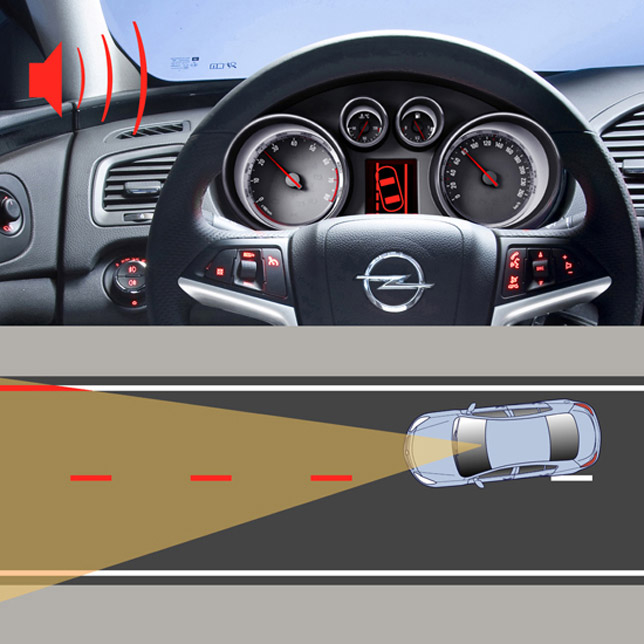
Attention: This is the new speed limit!
The Traffic Sign Detection can read speed limit and no-passing signs and even notify drivers when speed restrictions have been lifted. Depending on light conditions, the system begins to recognize and repeatedly read signs at 100 meters. It starts by focusing on circular patterns then identifies the numbers inside them via contour comparison. If a picture matches an image of a road sign in the car's software, the sign is displayed in the instruments panel..
The system always displays the most relevant information for safe driving, filtering out many signs that may overwhelm drivers. If two signs are recognized in close proximity to one another, then special notice signs, like "no passing" restriction would take precedence over a speed limit sign.
The notices are displayed for a few seconds as a symbol in the center of the instrument panel between the main round dials. In addition, drivers can recall the image any time by pressing a button on the steering wheel. Traffic Sign Detection can be activated via a sub-page in the car's onboard computer menu.
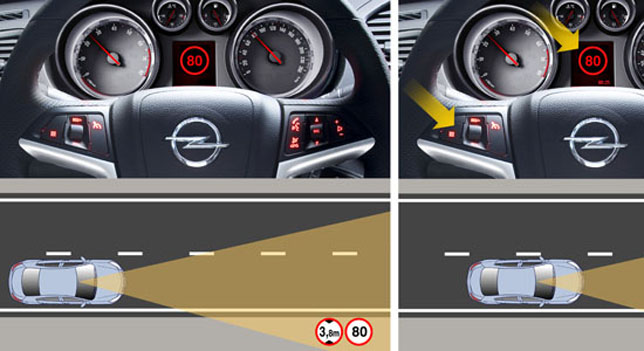
The Opel Eye gives more accurate information than portable navigation systems with stored speed limits because the camera works in real time. If a speed limit changes, due to road construction for instance, the Opel Eye detects it.
The processors are able to recognize traffic signs because most are designed uniformly in line with the Vienna Convention on Road Signs and Signals. Established in 1968, this agreement standardizes road signs throughout more than 80 countries (for more information see Spotlight chapter).
"As we were working with the Opel Eye, we enhanced the systems' capabilities to impressive levels. On German highways, for example, lanes sometimes have different speed limits. The Opel Eye is able to correctly register the relevant one every time," says
Dr. Christoph Schmidt, Engineering Group Manager of GME Electronics.
Lane Departure Warning: Alarm indicates unintentional lane change
The Opel Eye camera also checks whether drivers stay in their chosen lane on the highway. This helps prevent a dangerous situation, such as a driver falling asleep at the wheel. Lane Departure Warning can be switched on or off via a button. When active, it warns the driver with a gong sound and a blinking signal on the instrument panel.
Lane Departure Warning uses a second signal processor and software to filter lines and longitudinal patterns at speeds above 50 km/h. This enables the system to recognize the traffic lane. By using specific algorithms that define the conditions in which alerts are given and by noticing steering wheel and turn-indicator movements – signaling an intentional lane change – the system is designed only to intervene at the appropriate moment.
"A car that can see and warn the driver well in advance of potential hazards is another important step in our long-term accident prevention strategy," Demant says, adding that
GM Europe also is working on vehicle-to-vehicle communication, where cars can exchange information like position and speed. (see V2V)
Drivers can be warned in advance if another car is traveling in a blind spot, stopped in an area that is difficult or impossible to see, or about to enter the same intersection. A pilot project is currently underway in the German state of Hessen in collaboration with the state government.
The Opel Eye, featuring the Traffic Sign Detection and Lane Departure Warning will be available as an option in the new Opel Insignia. Other models will offer the systems in the future, in line with Opel's philosophy of democratizing technology.
In 2003, Opel was the first automaker to introduce the innovative Adaptive Forward Lighting system with dynamic curve lighting and 90-degree cornering light to the mid-size car class. That same year, Opel made electronic Continuous Damping Control available to Astra drivers. Prior to that, this feature usually was found only in luxury class and exclusive sports cars.


